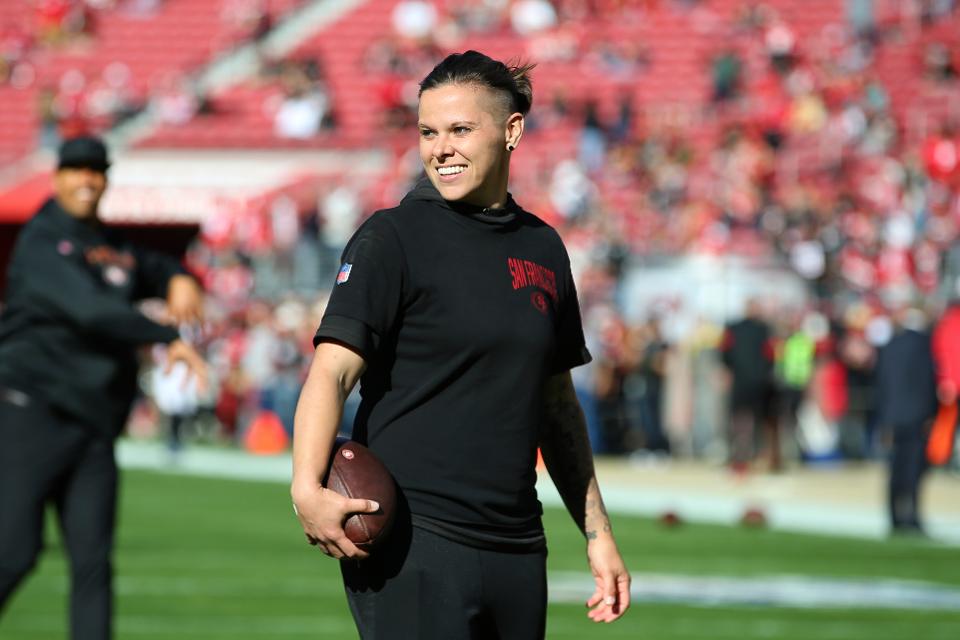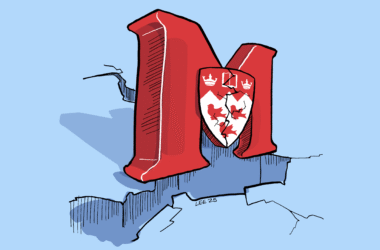San Francisco 49ers Offensive Assistant Coach San Francisco 49ers Offensive Assistant Coach Katie Sowers made history at Super Bowl LIV when she became the first female coach to ever appear in the competition. Two weeks earlier, the 49ers’ next-door neighbours, the San Francisco Giants, hired Alyssa Nakken, the first female full-time coach in the MLB. Several other women have made headlines throughout the years for breaking into the professional men’s sports scene, including Bernadette Madox, who was the first full-time assistant coach for a men’s NCAA Division I basketball team. Though these breakthroughs represent crucial progress, they also serve as a painful reminder of how unequal the world of sports remains.
Eight of the nine current head coaches in the National Women’s Soccer League (NWSL) are men. More than half of the former head coaches of the Canadian women’s national ice hockey team are men. At McGill, out of 30 men’s and women’s varsity sports, 26 have a male head coach. These numbers don’t make headlines, however, because they are the norm. Throughout every level of women’s sports, men are present, from coaching and administrative roles to officials and media.
The impact of women’s involvement in sports as more than just athletes is multi-dimensional. Both in and out of athletics, women face discrimination in the workplace. In the US, women actually used to comprise nearly all coaching positions for women’s teams before Title IX—a civil rights law intended to protect individuals from discrimination on the basis of sex in education programs or activities receiving federal funding—was passed in 1972. The law succeeded in improving women’s sports but attracted men to these coaching positions as they now offered better pay. In this world, once men decide that they want something, they get it, so the 90 per cent of NCAA women’s teams coaches that were female prior to the passing of Title IX has since dropped to just 40 per cent.
There is nothing about men as a group that inherently makes them better coaches than women, so there is no reason that men should be disproportionately considered for—and subsequently awarded—coaching jobs. Additionally, the double standard presents another barrier to female coaches. Anyone in a position of power, such as a head coach, is subject to criticism, but for women, there is often no way to win. Female coaches are more likely to be faulted for factors outside of their control and given fewer resources than their male counterparts, leading to shorter tenures and less successful careers. Women can have more knowledge and experience and still lose out on a job to a man. Thus, administrators, media, and fans alike must be more cognizant of their implicit biases before they make judgements or decisions that could unfairly damage a female coach’s reputation. They should also keep in mind that the barrier is even higher for women of colour. Among coaches of both men’s and women’s teams, the majority are white, so there needs to be a greater effort to combat prejudicial hiring by implementing better policies for correcting implicit bias.
Even at the lowest level of competition when girls are just beginning to play a sport, having female coaches can make a difference. As an eager, young athlete, I looked up to national stars like Mia Hamm and Cat Ostermann, but my true role models were the 20-something-year-old college players who spent their summers coaching and inspiring the next generation of female athletes. While famous stars are important for women’s sports, they can’t make a critical in-person connection with a young athlete like her coach can. Creating more opportunities for older players to return to their youth leagues as coaches and mentors will only increase the number of girls playing sports, which will, in turn, help improve the most competitive levels of women’s sports globally.
Women’s sports matter, and slowly but surely women are levelling the playing field. Parity, however, means more than creating equal opportunity for female athletes—the goal is equal opportunity for all women in sports.







